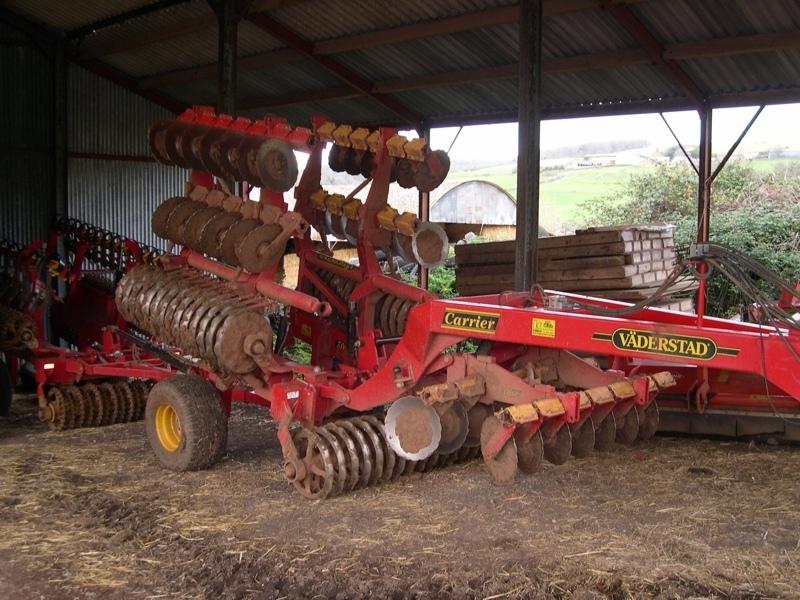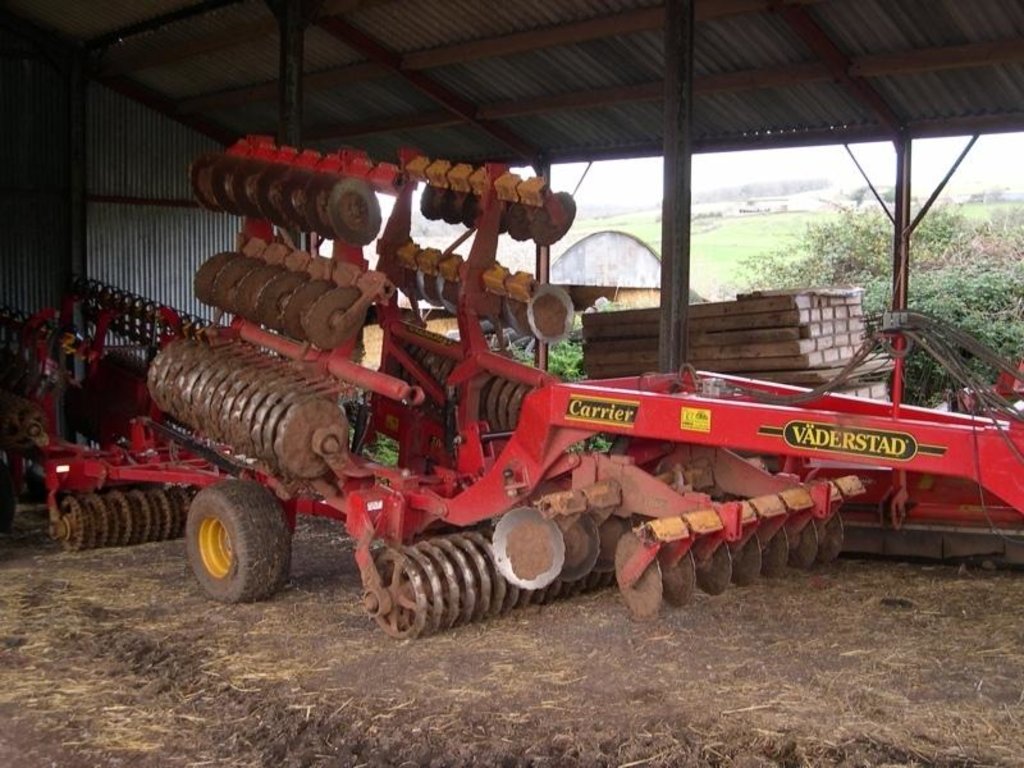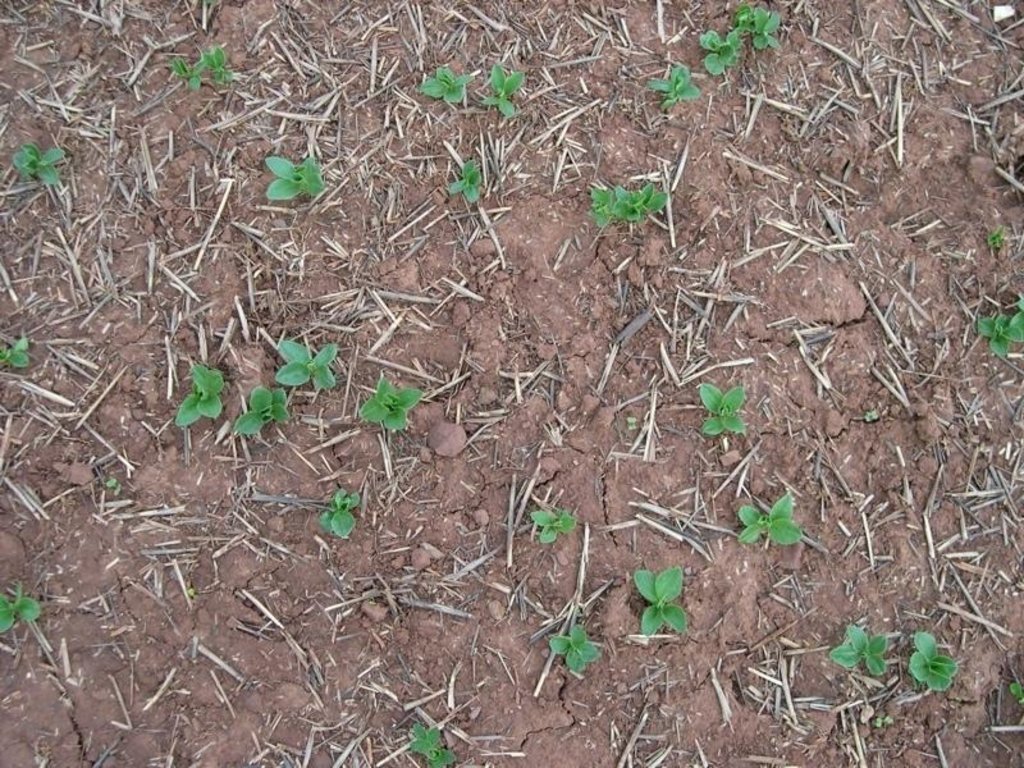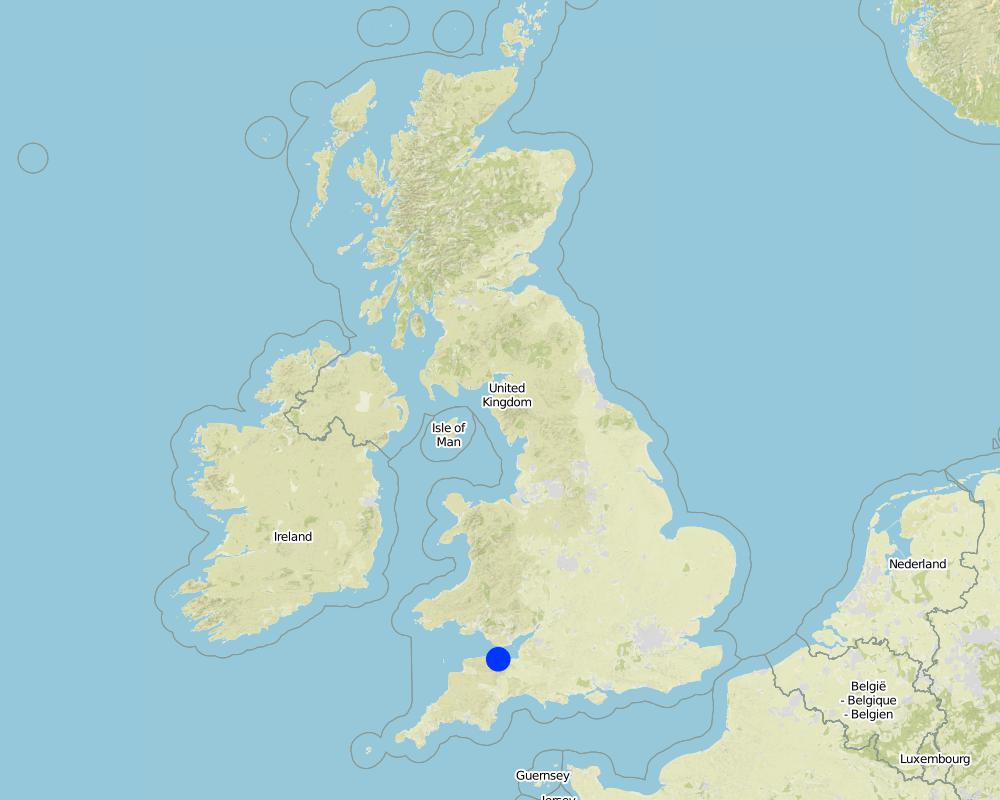Conservation tillage in UK arable cropping systems: Tivington [英国]
- 创建:
- 更新:
- 编制者: Ceris A. Jones
- 编辑者: –
- 审查者: Deborah Niggli, Alexandra Gavilano
non-inversion tillage (eng); minimum tillage (eng), conservation agriculture (eng)
technologies_983 - 英国
查看章节
全部展开 全部收起1. 一般信息
1.2 参与该技术评估和文件编制的资源人员和机构的联系方式
SLM专业人员:
Oborn Jo
Farming wildlife advisory group
英国
有助于对技术进行记录/评估的项目名称(如相关)
Soil and water protection (EU-SOWAP)有助于对技术进行记录/评估的机构名称(如相关)
Farmin & wildlife advisory group (FWAG) - 英国1.3 关于使用通过WOCAT记录的数据的条件
编制者和关键资源人员接受有关使用通过WOCAT记录数据的条件。:
是
1.4 所述技术的可持续性声明
这里所描述的技术在土地退化方面是否存在问题,导致无法被认为是一种可持续的土地管理技术?:
否
1.5 参考关于SLM方法(使用WOCAT记录的SLM方法)的调查问卷
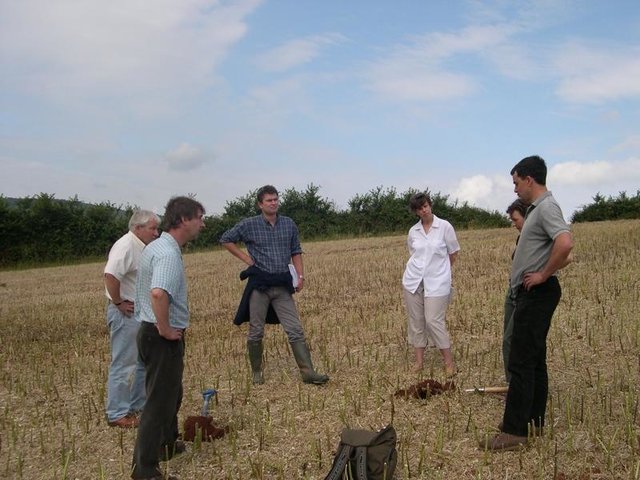
Participatory on-farm resarch and demonstration in UK arable … [英国]
To find and demonstrate ways of better managing the land.
- 编制者: Ceris A. Jones
2. SLM技术的说明
2.1 技术简介
技术定义:
Surface cultivation of up to the top 10cm of soil but not complete inversion
2.2 技术的详细说明
说明:
Machinery with discs or tines replace the plough for minimal cultivations of the soil. Equally crops may be established by no-tillage/ zero-tillage.
Purpose of the Technology: (i) soil protection (ii) improved crop establishment particularly through the speeding up of of operations.
Establishment / maintenance activities and inputs: appropriate machinery, soil condition and following crop all determine establishment. Maintenance: on an annual basis.
Natural / human environment: SOWAP (ww.sowap.org) project working with farmer to protect environment and maintain economic viability
2.3 技术照片
2.5 已应用该技术的、本评估所涵盖的国家/地区/地点
国家:
英国
区域/州/省:
Somerset
有关地点的进一步说明:
Minehead
注释:
Total area covered by the SLM Technology is 0.007 km2.
Farm is a total of 126ha of which 28ha are grazed, 9ha are under environmental stewardship and 7ha are set aside. The total SWC technology area represents a project demonstration plot.
Map
×2.7 技术介绍
详细说明该技术是如何引入的:
- 通过项目/外部干预
注释(项目类型等):
From the USA where in the 1930's the 'dust-bowls' necessitated the development of soil conservation in intensive agriculture.
3. SLM技术的分类
3.1 该技术的主要目的
- 改良生产
- 减少、预防、恢复土地退化
3.2 应用该技术的当前土地利用类型

农田
- 一年一作
年作 - 具体指明作物:
- 谷类 - 小麦(春季)
- 油料作物 - 向日葵、菜籽、其他
每年的生长季节数:
- 1
具体说明:
Longest growing period in days: 300, Longest growing period from month to month: Sep - Jul
注释:
Major land use problems (compiler’s opinion): Soil erosion and compaction caused by inappropriate land use and intensive grazing respectively
Major land use problems (land users’ perception): Soil erosion and capping of the soil
Type of cropping system and major crops comments: winter wheat - winter oilseed rape - winter wheat - beans - winter wheat
3.4 供水
该技术所应用土地的供水:
- 雨养
3.5 该技术所属的SLM组
- 最小的土壤扰动
3.6 包含该技术的可持续土地管理措施

农艺措施
- A1:植被和土壤覆盖层
- A3:土壤表面处理
A3:区分耕作制度:
A 3.1:免耕
注释:
Type of agronomic measures: early planting, mulching, mineral (inorganic) fertilizers, minimum tillage, breaking compacted subsoil
3.7 该技术强调的主要土地退化类型

土壤水蚀
- Wt:表土流失/地表侵蚀
- Wo:场外劣化效应

物理性土壤退化
- Pk:熟化和结壳
注释:
Main causes of degradation: other human induced causes (specify) (agricultural causes: focus on yields), labour availability (too much labour: attempting to maintain rural employment)
Secondary causes of degradation: education, access to knowledge and support services (lack of knowledge), insufficient time for farmers to consider the issu
3.8 防止、减少或恢复土地退化
具体数量名该技术与土地退化有关的目标:
- 减少土地退化
4. 技术规范、实施活动、投入和成本
4.1 该技术的技术图纸
技术规范(与技术图纸相关):
Technical knowledge required for field staff / advisors: moderate
Technical knowledge required for land users: moderate
Main technical functions: improvement of soil structure
Secondary technical functions: control of raindrop splash, control of dispersed runoff: retain / trap, improvement of ground cover, increase in organic matter, increase in soil fertility
Early planting
Material/ species: crop
Quantity/ density: depends on
Remarks: residue chopped + spread over width of combine
Mulching
Material/ species: crop residue
Quantity/ density: up to 5t/h
Mineral (inorganic) fertilizers
Material/ species: N,P,K, trace elements
Remarks: broadcast
Breaking compacted subsoil
Remarks: when required
4.2 有关投入和成本计算的一般信息
其它/国家货币(具体说明):
£
如相关,注明美元与当地货币的汇率(例如1美元=79.9巴西雷亚尔):1美元=:
0.56
4.5 维护/经常性活动
| 活动 | 时间/频率 | |
|---|---|---|
| 1. | Year1: light cultivation with discs | 3rd-4th week in August / per crop |
| 2. | Year1: spray with non-selective herbicide (glyphosate) | late August/ early September / per crop |
| 3. | Year1: drill | late August/ early September, 3-4 days after spraying / per crop |
| 4. | Year1: roll (optional) | after drilling / per crop |
注释:
Additional info: - Year2: drill: mid September / per crop - Year2: roll: mid September / per crop - Year3: shallow sub-soil: November / per crop - Year3: drill: November / per crop
4.6 维护/经常性活动所需要的费用和投入(每年)
| 对投入进行具体说明 | 单位 | 数量 | 单位成本 | 每项投入的总成本 | 土地使用者承担的成本% | |
|---|---|---|---|---|---|---|
| 设备 | Equipment (year1) machine hour | ha | 1.0 | 148.0 | 148.0 | 100.0 |
| 设备 | Equipment (year2) machine hour | ha | 1.0 | 166.0 | 166.0 | 100.0 |
| 设备 | Equipment (year3) machine hour | ha | 1.0 | 113.0 | 113.0 | 100.0 |
| 技术维护所需总成本 | 427.0 | |||||
| 技术维护总成本,美元 | 762.5 | |||||
注释:
Machinery/ tools: Vaderstad Carrier, Vaderstad drill and roller
Only crop establishment costs are included as all other costs - seed, fertilisers, pesticides - are equivalent with those for conventionally mouldboard ploughing. The costs highlghted include labour. Equivalent crop establishment costs by ploughing are 225 (year1), 231 (year2), 190 (year3)
4.7 影响成本的最重要因素
描述影响成本的最决定性因素:
slope (steeper slopes require more horsepower), state of the soil, climate, crop
5. 自然和人文环境
5.1 气候
年降雨量
- < 250毫米
- 251-500毫米
- 501-750毫米
- 751-1,000毫米
- 1,001-1,500毫米
- 1,501-2,000毫米
- 2,001-3,000毫米
- 3,001-4,000毫米
- > 4,000毫米
指定年平均降雨量(若已知),单位为mm:
800.00
农业气候带
- 半湿润
5.2 地形
平均坡度:
- 水平(0-2%)
- 缓降(3-5%)
- 平缓(6-10%)
- 滚坡(11-15%)
- 崎岖(16-30%)
- 陡峭(31-60%)
- 非常陡峭(>60%)
地形:
- 高原/平原
- 山脊
- 山坡
- 山地斜坡
- 麓坡
- 谷底
垂直分布带:
- 0-100 m a.s.l.
- 101-500 m a.s.l.
- 501-1,000 m a.s.l.
- 1,001-1,500 m a.s.l.
- 1,501-2,000 m a.s.l.
- 2,001-2,500 m a.s.l.
- 2,501-3,000 m a.s.l.
- 3,001-4,000 m a.s.l.
- > 4,000 m a.s.l.
5.3 土壤
平均土层深度:
- 非常浅(0-20厘米)
- 浅(21-50厘米)
- 中等深度(51-80厘米)
- 深(81-120厘米)
- 非常深(> 120厘米)
土壤质地(表土):
- 中粒(壤土、粉土)
表土有机质:
- 中(1-3%)
如有可能,附上完整的土壤描述或具体说明可用的信息,例如土壤类型、土壤酸碱度、阳离子交换能力、氮、盐度等。:
Soil fertility is medium
5.6 应用该技术的土地使用者的特征
生产系统的市场定位:
- 商业/市场
非农收入:
- > 收入的50%
相对财富水平:
- 丰富
机械化水平:
- 机械化/电动
说明土地使用者的其他有关特征:
Population density: 10-50 persons/km2
Annual population growth: < 0.5%
5% of the land users are very rich and own 20% of the land.
10% of the land users are rich and own 20% of the land.
85% of the land users are average wealthy and own 60% of the land.
Off-farm income specification: Contracting work forms greater part of income
5.7 应用该技术的土地使用者使用的平均土地面积
- < 0.5 公顷
- 0.5-1 公顷
- 1-2 公顷
- 2-5公顷
- 5-15公顷
- 15-50公顷
- 50-100公顷
- 100-500公顷
- 500-1,000公顷
- 1,000-10,000公顷
- > 10,000公顷
注释:
126ha
5.8 土地所有权、土地使用权和水使用权
- Other
土地使用权:
- 租赁
6. 影响和结论性说明
6.1 该技术的现场影响
社会经济效应
生产
作物生产
注释/具体说明:
perhaps most significant in early years
土地管理
收入和成本
农业投入费用
注释/具体说明:
Possible increasing herbicide costs
农业收入
工作量
注释/具体说明:
Timing of operations critical
其它社会经济效应
Preparation for new legislation
注释/具体说明:
CAP reform, Soil Action Plan for England, EU Water Framework directive
Timeliness
注释/具体说明:
operation twice as quick as ploughing
Machinery costs
社会文化影响
冲突缓解
Acceptance by society
注释/具体说明:
Age differences: Tends to be taken up by younger farmers
生态影响
土壤
土壤水分
土壤覆盖层
土壤压实
生物多样性:植被、动物
动物多样性
注释/具体说明:
More earthworms compared to land that has been ploughed
害虫/疾病控制
SLM之前的数量:
0.01
SLM之后的数量:
0
其它生态影响
Soil fertility
6.2 该技术的场外影响已经显现
下游淤积
6.4 成本效益分析
技术收益与技术建立成本相比如何(从土地使用者的角度看)?
短期回报:
稍微积极
长期回报:
积极
技术收益与技术维护成本/经常性成本相比如何(从土地使用者的角度看)?
短期回报:
中性/平衡
长期回报:
中性/平衡
6.5 技术采用
注释:
100% of land user families have adopted the Technology without any external material support
1 land user families have adopted the Technology without any external material support
There is a moderate trend towards spontaneous adoption of the Technology
Comments on adoption trend: Driven by economics
6.7 该技术的优点/长处/机会
| 土地使用者眼中的长处/优势/机会 |
|---|
| ncreased work rate making operations quicker |
| Better trafficability |
| Less at risk of weather |
| Earlier drilling. It is a systems approach - minimum tillage combined with early drilling and low seed rates |
| 编制者或其他关键资源人员认为的长处/优势/机会 |
|---|
| Increased work rate and cost effectiveness |
| Improved soil organic matter |
| Imrpoved water quality |
| Improved soil biodiversity |
6.8 技术的弱点/缺点/风险及其克服方法
| 土地使用者认为的弱点/缺点/风险 | 如何克服它们? |
|---|---|
| Dependent on dry weather | Co-operation with other farmers or larger acreage |
| Machinery more complex and expensive | A combination of crop rotation, pesticides and stale seedbeds |
| Increasing grass weed populations | Does not necessarily mean spending money eg utilising old equipment on farm like subsoilers. However, need the right attitude |
| Need to be experimental | Accept advice for varying sources, talk to different people |
| Advice can be fragmented/ confusing |
| 编制者或其他关键资源人员认为的弱点/缺点/风险 | 如何克服它们? |
|---|---|
| Technological knowledge of farmer | Training and education, dissemination |
| Initial high capital investment | Extended finance |
| Possible increasing weed populations | More diverse management options - cultural and chemical |
| Need to expand acreage to cover capital costs | More diverse crop rotation but perhaps this is insufficient to retain economic viability |
7. 参考和链接
7.1 信息的方法/来源
- 实地考察、实地调查
- 与土地使用者的访谈
(现场)数据是什么时候汇编的?:
21/02/2005
7.2 参考可用出版物
标题、作者、年份、ISBN:
FWAG (Farming and Wildlife Advisory group)
可以从哪里获得?成本如何?
www.fwag.org.uk
7.3 链接到网络上的相关信息
标题/说明:
SMI
URL:
www.smi.org.uk
标题/说明:
L and D farming
URL:
www.landdfarming.co.uk
标题/说明:
Vaderstad machinery
URL:
www.vaderstad.com
标题/说明:
SOWAP project
URL:
www.sowap.org
链接和模块
全部展开 全部收起链接

Participatory on-farm resarch and demonstration in UK arable … [英国]
To find and demonstrate ways of better managing the land.
- 编制者: Ceris A. Jones
模块
无模块


